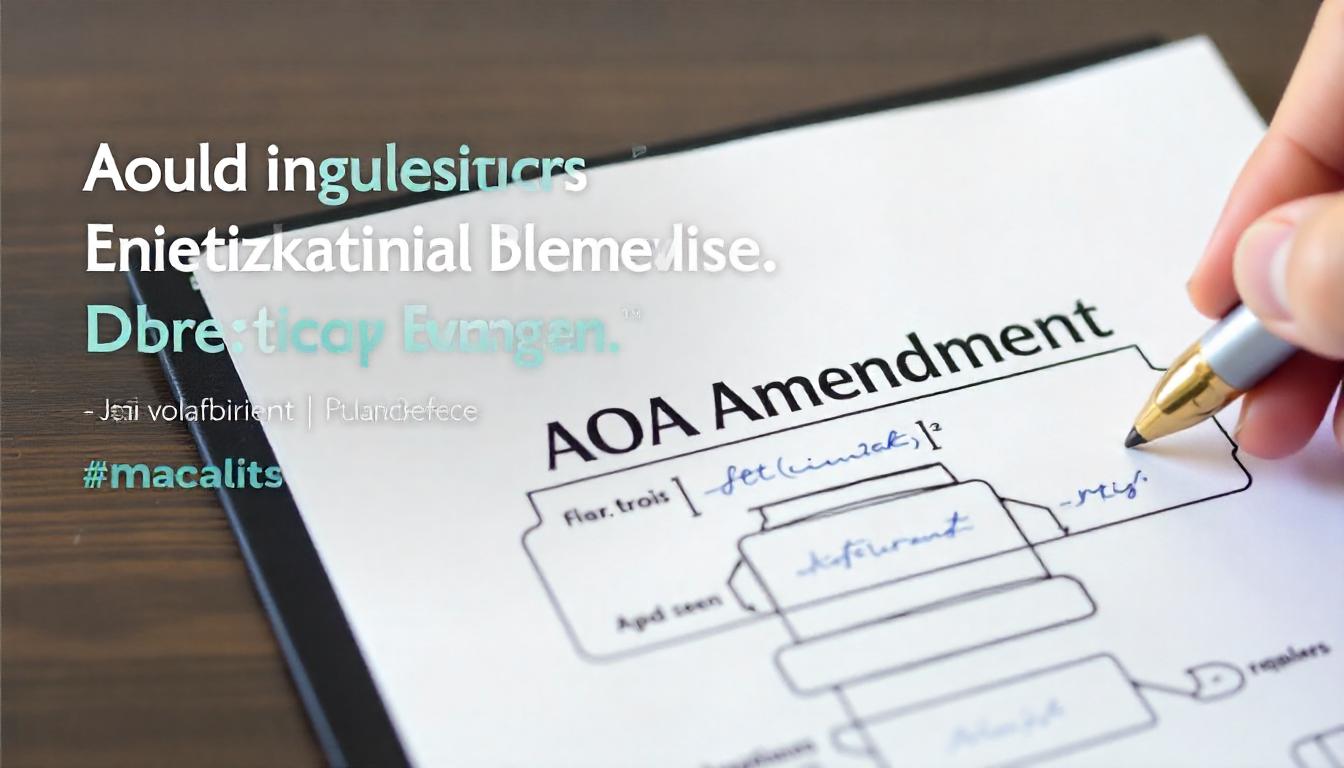Complete Guide to AOA Amendment in India: Process, Documents & Fees
Introduction
The Articles of Association (AOA) is a crucial document for Indian companies. It lays down the rules for how the company is run and how decisions are made. When changes are needed—like shifting company goals or updating director details—amending the AOA becomes necessary. Knowing the legal steps, required paperwork, and costs involved helps avoid delays and fines. If you plan to modify your AOA, understanding this process can save you time and money.
What is an AOA and Why Amend It?
An Articles of Association is like a rulebook for your company. It explains how the company manages its daily affairs, how shares are distributed, and how meetings are conducted. Sometimes, companies need to change this rulebook. Common reasons include changing company objectives, updating share structures, or modifying director details. Doing so ensures the company stays compliant with law and aligns with new business goals.
Timely amendments can protect the company from legal issues and make governance clearer. It also helps in avoiding penalties and increases trust with investors and partners. Think of it as updating a smartphone’s software—necessary to keep everything running smoothly.
Legal Framework Governing AOA Amendments in India
Amendments to the AOA are governed by the Companies Act, 2013. The Act sets out the rules for making changes and the approvals needed. The Registrar of Companies (ROC) is the official body that verifies and registers these changes. Companies must adhere to specific deadlines and procedures under the law to ensure their amendments are valid.
Understanding these legal requirements helps prevent mistakes that could lead to rejection or penalties. For example, you must pass a special resolution and file certain forms within the deadlines specified in the Act. Staying compliant ensures your company’s records are always up-to-date.
Step-by-Step Process to Amend the AOA
Preparing for AOA Amendment
Start with identifying why you need to make changes. Talk with key stakeholders—directors, shareholders, and legal advisors—to understand the scope. Draft the proposed amendments carefully, ensuring they meet legal standards. This initial stage is crucial to prevent conflicts or errors later.
Approving the AOA Amendment
Next, a Board Meeting must be called to discuss the proposal. But approval from members is required too. Shareholders will need to pass a special resolution during a General Meeting, showing their support. This is a legal requirement and forms the basis for filing official documents.
Filing with the Registrar of Companies
Once approved, prepare documents like the resolution, meeting minutes, and amended AOA copy. All these must be uploaded via the MCA portal using e-filing. The ROC then reviews and processes the application. Typically, it takes a few weeks to get approval, but delays can happen if paperwork isn’t complete.
Essential Documents Required for AOA Amendment
When filing for an AOA change, you need many formal papers. These include:
- Board resolution approving the amendments
- Shareholders’ special resolution
- Copy of the amended Articles of Association
- Company registration details, like PAN, TAN, and other certificates
- Statutory forms such as MGT-7 (annual return) and AOC-4 (financial statement)
Having these ready ensures a smooth filing process and reduces chances of rejection or rejection delays.
Fees and Costs Involved in AOA Amendment
The total cost depends on your company’s size and share capital. Filing fees are calculated based on authorized capital, generally ranging from a few hundred to several thousand rupees. Professional charges for legal advice or company secretary services are additional.
Other costs may include notarization if required. Usually, fees are paid through the MCA portal during submission, and the processing time varies. Expect the entire process to take around 3 to 6 weeks after all documents are submitted and payment made.
Common Challenges and Tips for a Smooth AOA Amendment
Many companies face delays due to incomplete documents or non-compliance with procedures. To avoid this, ensure every form is filled correctly and all approvals are in place. Consulting experts or company secretaries can streamline the process and help meet deadlines.
After the amendment is registered, update statutory registers and inform stakeholders. Keeping everything updated minimizes future legal risks and helps your company operate smoothly.
Case Studies and Examples
Multi-national companies and start-ups alike have recently made AOA amendments to reflect new business directions. One firm changed its shareholding structure after a funding round, while another updated director details. Learning from these examples shows the importance of following proper procedures and avoiding shortcuts that might lead to rejection.
Conclusion
Amending the Articles of Association is an essential process for maintaining compliance and adapting to business needs. Careful planning, proper documentation, and understanding legal requirements ensure swift approval. Keep costs in check by working with experienced professionals, and stay updated with statutory changes.
Take action now—know your process, gather your documents, and budget for the fees. Doing so will make your AOA amendment hassle-free and legally compliant. Your company’s growth depends on it.
